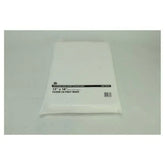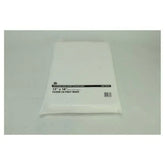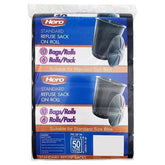Essential Sanitization Techniques for Medical Equipment Safety
In the healthcare sector, ensuring the safety of medical equipment is critical for patient care. Proper sanitization techniques help minimize the risk of infections and maintain the integrity of the equipment. This article will outline effective sanitization protocols that healthcare providers can implement to protect both patients and staff, emphasizing the importance of cleanliness in medical settings.
Understanding the Importance of Sanitization in Healthcare
Why Sanitization Matters
Sanitization is a core component in healthcare that prevents the spread of infections. As patients are often vulnerable, maintaining high sanitation standards is crucial. The health care-associated infections (HAIs) can arise from improperly sanitized equipment, highlighting the need for thorough cleaning and disinfecting. Each piece of medical equipment requires a specific protocol for sanitization to ensure it is safe for use and effective in delivering care.
Risks of Inadequate Sanitization
Failing to properly sanitize medical devices can lead to severe consequences, including infections that complicate patient health. For instance, equipment such as the CPAP machine can harbor bacteria if not cleaned regularly. This can result in respiratory issues or other health complications for patients relying on such devices. Therefore, implementing strict sanitization measures is paramount.
Effective Sanitization Techniques for Medical Equipment

Basic Cleaning Procedures
Begin sanitization with thorough cleaning to remove visible dirt and organic material. The following steps outline basic cleaning procedures:
- Disassemble: Remove any detachable parts according to manufacturer instructions.
- Wash: Use a mild detergent and warm water to clean all surfaces.
- Rinse: Ensure all detergent residues are rinsed off with distilled water.
- Air Dry: Allow the equipment to dry completely in a clean environment.
Advanced Disinfection Techniques
After cleaning, disinfection is necessary to eliminate pathogens. Below are techniques used for effective disinfection:
- Chemical Disinfectants: Use approved disinfectants like alcohol or sodium hypochlorite that are effective against a wide range of microbes.
- Heat Sterilization: For heat-resistant items, autoclaving can ensure all microorganisms are eradicated.
- Ultraviolet (UV) Light: Employ UV light systems for surfaces that can tolerate light exposure. This method can kill bacteria without chemicals.
Best Practices for Sanitizing Medical Equipment
Implementing Manufacturer Recommendations
It is essential to follow the manufacturer's guidelines when sanitizing medical devices. These guidelines provide specific instructions tailored to different types of equipment, ensuring optimal disinfection effectiveness. Regular consultations of these guidelines can prevent mistakes that may lead to contamination.
Utilizing Proper Personal Protective Equipment (PPE)
Staff should always use appropriate PPE when handling contaminated equipment. This includes gloves, masks, and goggles to protect against exposure to harmful pathogens and chemicals. Adhering to safety protocols helps reduce the risk of personal exposure to infectious agents.
Roles and Responsibilities in Equipment Sanitization
Designating Team Roles
Ambiguities in cleaning responsibilities can lead to missed steps in sanitization. Healthcare facilities should assign clear roles for sanitization tasks. Cleaning personnel should be trained in protocols specific to the equipment they handle, while supervisory staff ensure adherence to procedures and proper training.
Maintaining a Cleaning Schedul
Creating a structured cleaning schedule is vital. This ensures the timely sanitation of equipment, reducing the likelihood of contamination. A suggested schedule could include:
- Daily: High-touch areas
- Weekly: Patient care equipment
- Monthly: Comprehensive audits of sanitization practices to identify areas for improvement
Regular Inspections and Maintenance
Importance of Routine Checks
Regular inspections are essential to identify any defects or contamination risks in medical equipment. Healthcare providers should schedule periodic evaluations as part of their maintenance program to continuously monitor the integrity and effectiveness of sanitization practices.
Documentation of Cleaning Procedures
Documenting cleaning procedures can enhance accountability and ensure compliance with standards. A log detailing the equipment cleaned, date, time, and personnel involved can provide necessary records for audits and inspections, contributing to improved healthcare safety.
Conclusion: Ensuring Equipment Safety through Proper Sanitization
Effective sanitization techniques for medical equipment are a vital component of infection control in healthcare. By implementing strategic cleaning and disinfection protocols and adhering to best practices, healthcare providers can safeguard their patients and enhance the longevity and performance of their medical devices. Regular training and adherence to cleaning schedules ensure ongoing compliance with hygiene standards, minimizing the risk of HAIs. Investing in products such as CP Plus Probe Wipe can further support effective cleaning initiatives while prioritizing patient safety.
Frequently Asked Questions (FAQs)
What are basic steps in sanitizing medical equipment?
The basic steps include disassembling the equipment, washing with detergent, rinsing, disinfecting, and air drying. Always consult manufacturer guidelines for precise instructions.
How often should medical equipment be sanitized?
Frequency depends on equipment usage, but high-touch items require daily cleaning, while other equipment may follow weekly or monthly schedules.
Why is PPE necessary during sanitization?
PPE protects staff from exposure to pathogens and harsh cleaning chemicals, ensuring a safer working environment while handling contaminated materials.









